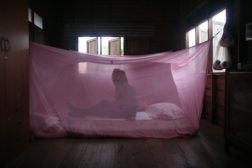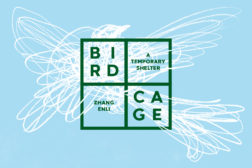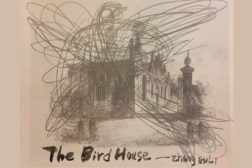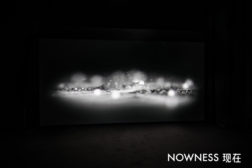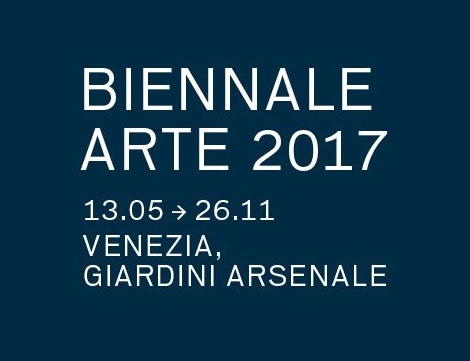
Arthub Coordinates Venice Biennale China Pavilion
Arthub is delighted to announce that our founder Davide Quadrio will coordinate with Qiu Zhijie in the 57th Venice Biennale for China Pavilion. Arthub also will act as the cooperate partner.
Duration: May 13th – 26th Nov, 2017
Curator: Qiu Zhijie
Artist Coordinator: Davide Quadrio
Artists: Wu Jian’an, Tang Nannan, Wang Tianwen, Yao Huifen
Introduction of China Pavilion
The 57th Venice Biennale will open on May 13th and be on view until 26th November 2017. The theme of this year’s biennale is “Viva Arte Viva,” an exhibition by artists, with artists, and for artists. It puts the artists on the front line and provides them with the opportunity for free expression. The theme of this year’s Chinese Pavilion is Continuum – Generation by Generation; it is also an exhibition curated by an artist for artists. It brings forward a project about the Chinese understanding of “eternity,” and reveals the profound essence of Chinese wisdom. It brings together contemporary art and folk art, and through their interaction, the mystery of long-lasting Chinese culture and Chinese art is interpreted.
Qiu Zhijie, recognized for the multiplicity of his interests and talents as an artist, has been selected as the curator of this exhibition. The mission of the Chinese Pavilion is to capture the energy of continuum or “Bu Xi” in Chinese, to convey the stories about regeneration in ancient texts and new vitality in today’s art making, and to capture the transformation and renewal of traditional craftsmanship.
The images of “Mountain/Sea” and “Ancient/New” representing “Yin/Yang” are the framework for the narration of this exhibition. Two well-known Chinese fables, The Foolish Old Man Removes the Mountains and Jingwei Filling the Sea, provide the imagery that correspond to “mountain” and “sea”. Two Song Dynasty paintings, Li Song’s Skeleton Fantasy Show and Ma Yuan’s Twelve Images of Water Surging have been chosen as the “foreword” for this exhibition. The two works both touch upon the unique characteristics of the Chinese spiritual world, especially the outlook on life, death, and time, which all point to the concept of “Bu Xi.”
Two folk artists and two contemporary artists have been commissioned to convey the meaning of the above narrative. Folk crafts and the works of contemporary artists permeate each other. Suzhou embroidery master Yao Huifen will recreate the Skeleton Fantasy Show through the use of more than a hundred exquisite and unique techniques, and participate in making Tang Nannan’s work The Forgotten Sea. Wu Jian’an and shadow play master Wang Tianwen have been collaborating for many years. For this exhibition, they will create new works inspired by the imagery of mountain/sea as well as Ma Yuan’s water paintings. Tang Nannan, who was born into a theatrical family, shadow play master Wang Tianwen, Wu Jian’an from Shanghai Jinshan, and Yao Huifen from Suzhou will also produce new collaborative works. Thus the entire exhibition will form a network of intertextual and collective creation. Each artist will collaborate with the other three artists; at the same time, additional curators and artists will collaborate to form a living performance.
Chinese art is not the isolated creation of a single mortal Chinese artist, but is a collective creation across five thousand years. It is a scholarly recital and gathering lasting thousands of years. Chinese artists do not work in solitude. Their creations are always a kind of response, a kind of enlightenment, in anticipation of echoing and of being critiqued and commented upon. This exhibition strives to transform the idea and imagery of”Bu Xi” into archival evidence. A section to display archival documents will be established in the pavilion, showing the educational lineage of these four artists. Unlike the previous Chinese Pavilions, this section is not a mere supplement, but the spiritual essence of this exhibition.
Every Chinese artist has his or her own educational lineage, and at the same time he or she is also a teacher. As long as they are creating, their teachers will never die. This kind of overlaying discourse and echoing of folk art and fine art, new art and traditional art, creates an energy field of “Bu Xi”. This is different from the way of individual creation, and is the primary characteristic of Chinese art and civilization as it has passed from one generation to the next for thousands of years. Contemporary Chinese art stems from the same lineage. This is the Chinese response to “Viva Arte Viva.”
Collaborated Organizations
Supported by: Ministry of Culture of the People’s Republic of China
Commissioner: China Arts and Entertainment Group
Contributor: Shanghai Ming Contemporary Art Museum, Beijing Times Art Museum
Partner institution: Ming Yuan Group , Bloomage International Investment Group
Technical Support: Hongri Lighting
New Media Art Production Partner: Shanghai Helu Culture Communication Co.,Ltd., Shanghai Mana Network Co.Ltd
Artistic Coordinator: Davide Quadrio in collaboration with Arthub
About Curator
Qiu Zhijie was born in Fujian Province, China, in 1969. He graduated from the Printmaking department at China Academy of Art in 1992. He works as director in Arthub and is a professor of the Central Academy of Fine Arts, the Dean of School of Experimental Art of CAFA. He is also a professor at the School of Inter-media Art of China Academy of Art, the director of Total Art Studio and Field Research Lab of CAFA, and supervisor of master and doctoral students.
As an established artist, Qiu Zhijie is known for his calligraphy and ink painting, photography, video, installation and performance works. His art is representational of a new kind of experimental communication between the Chinese literati tradition and contemporary art, social participation and the power of self-liberation of art.
Besides being an artist, Qiu Zhijie is both an influential art theory writer, who published several books concerning various subjects, and a curator, been considered as the pioneer and organizer of new media art in China. In 2015, he took the position of the director of Shanghai Ming Contemporary Art Museum.
Participate Artists
Tang Nannan
Born 1969, Fujian
Doctor degree from the School of Inter-media Art of China Academy of Art
Works and Lives in Hangzhou
Wu Jian’an
Born in 1980, Beijing
Master degree from the School of Experimental Art of Central Academy of Fine Arts
Works and Lives in Beijing
Wang Tianwen
Born in 1949, Hua County, Shaanxi
Inheritor of Shanxi shadow play, Certified Chinese Craft and Art Master, shadow play carving and appraisal expert
Works and Lives in Xi’an
Yao Huifen
Born in 1967, Suzhou
National Intangible Cultural Heritage project, Suzhou embroidery inheritor
Works and Lives in Suzhou
